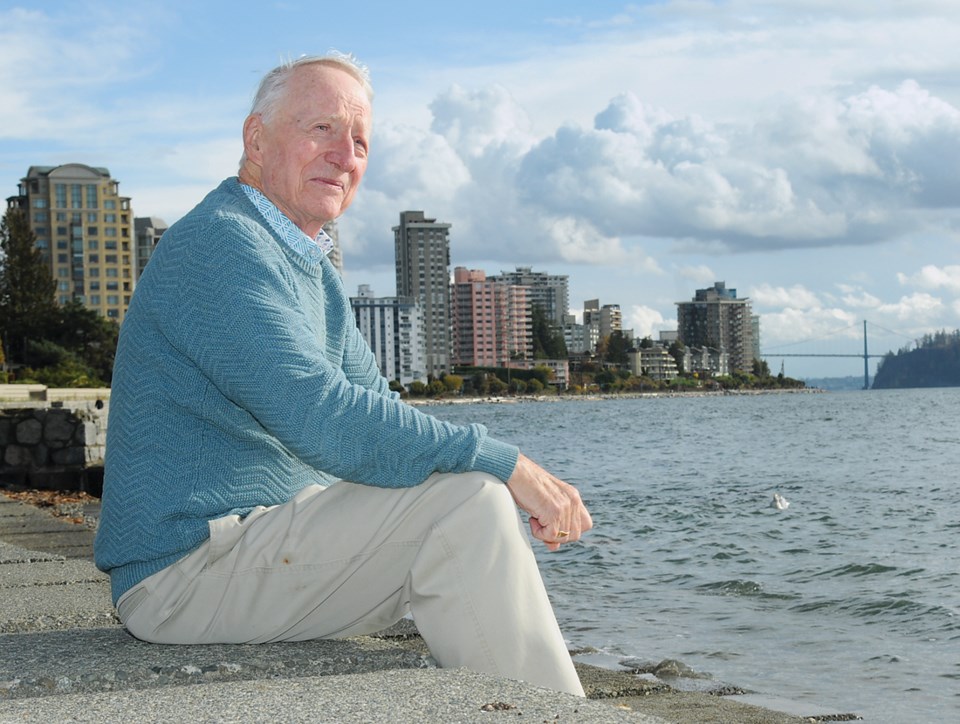If West Vancouver seems like an idyllic place, with vast parks and quiet neighbourhoods, it didn’t happen by accident. Rod Day should know. He had a hand in shaping it.
In his recently published book Inside West Vancouver, Day has documented more than a century of the planning decisions that have given the municipality the look and feel it has today. He’ll be giving a talk on that history and his book at the West Vancouver Memorial Library on Wednesday, Nov. 2.
Day spent 16 years in non-consecutive terms on council, from 1987 to 1996 and again from 2003 to 2008, and he sat on advisory commissions going back to the 1970s.
“Along the way, somebody said ‘You’d better write a book,’” he said. “So I wrote a history of West Vancouver from 1912.”
Day’s book is more than a memoir. As a trained historian, he spent long hours in the West Vancouver Archives and poring over documents he’s collected in his own files, which long-ago bureaucrats decided weren’t worth keeping. It took about four years of research before the book was ready to publish.
The upshot is in accounting of all the things that make West Van, West Van.
“Most cities have affluent suburbs and I would argue in the book that West Van did a better job of planning and dealing with development and came out a very attractive park-like community. But it was a tough struggle all the way along, because a lot of people wanted to exploit the natural beauty of the place,” he said. “We had to fight developers all the way going back to the 1960s.”
At one point, a developer pitched building a new 25,000-resident neighbourhood on fill deposited in the water off Ambleside. There are stories about highrises and golf courses that never came to be. Day helped organize citizen groups, which councils took notice of, and developed planning practices that are still in use today.
“This continued over the years with citizen involvement,” he said.
The book is more than a history of a community saying “no to “irresponsible development,” though. He also details the plans to acquire all the private land along Ambleside shoreline for public use and consolidate all future development in the Upper Lands to just one area off Cypress Bowl Road, where Cypress Village is now getting into its final planning stages.
But there is an irony to all, Day acknowledges and documents in his concluding chapter. West Vancouver preserved its character but it became a destination for speculative investment in real estate. Monster houses cropped up. The community became highly exclusive and reliant on commuters, and populations demographics have become lopsided, he acknowledged.
“It’s not good,” he said with a laugh. “Wealthy municipalities, they do all these things for their own benefit, but at the same time, it becomes increasingly impossible for people to get into to live in.”
When he moved to West Vancouver in 1966, a home could be purchased for $22,000, he noted.
“Imagine what it would cost now,” he said. “It’s changed a lot but that’s the history that I wrote.”
Inside West Vancouver is available through the book's publisher, West Vancouver Historical Society.
When: Wednesday Nov. 2, from 6 to 7:30 p.m
Where: Welsh Hall, West Vancouver Memorial Library, 1950 Marine Dr., West Vancouver
Cost: Admission is free. To register, visit the library's website.



